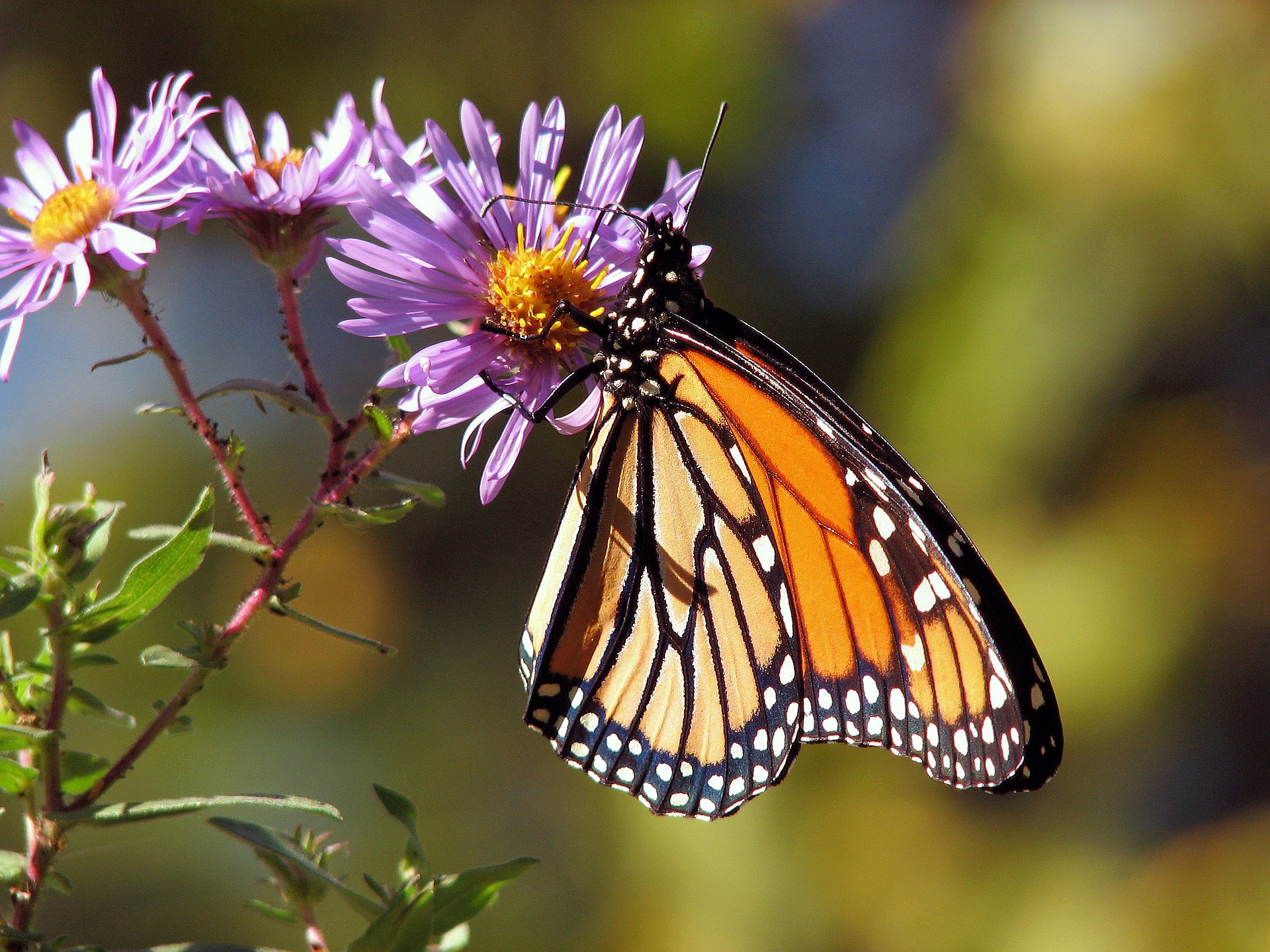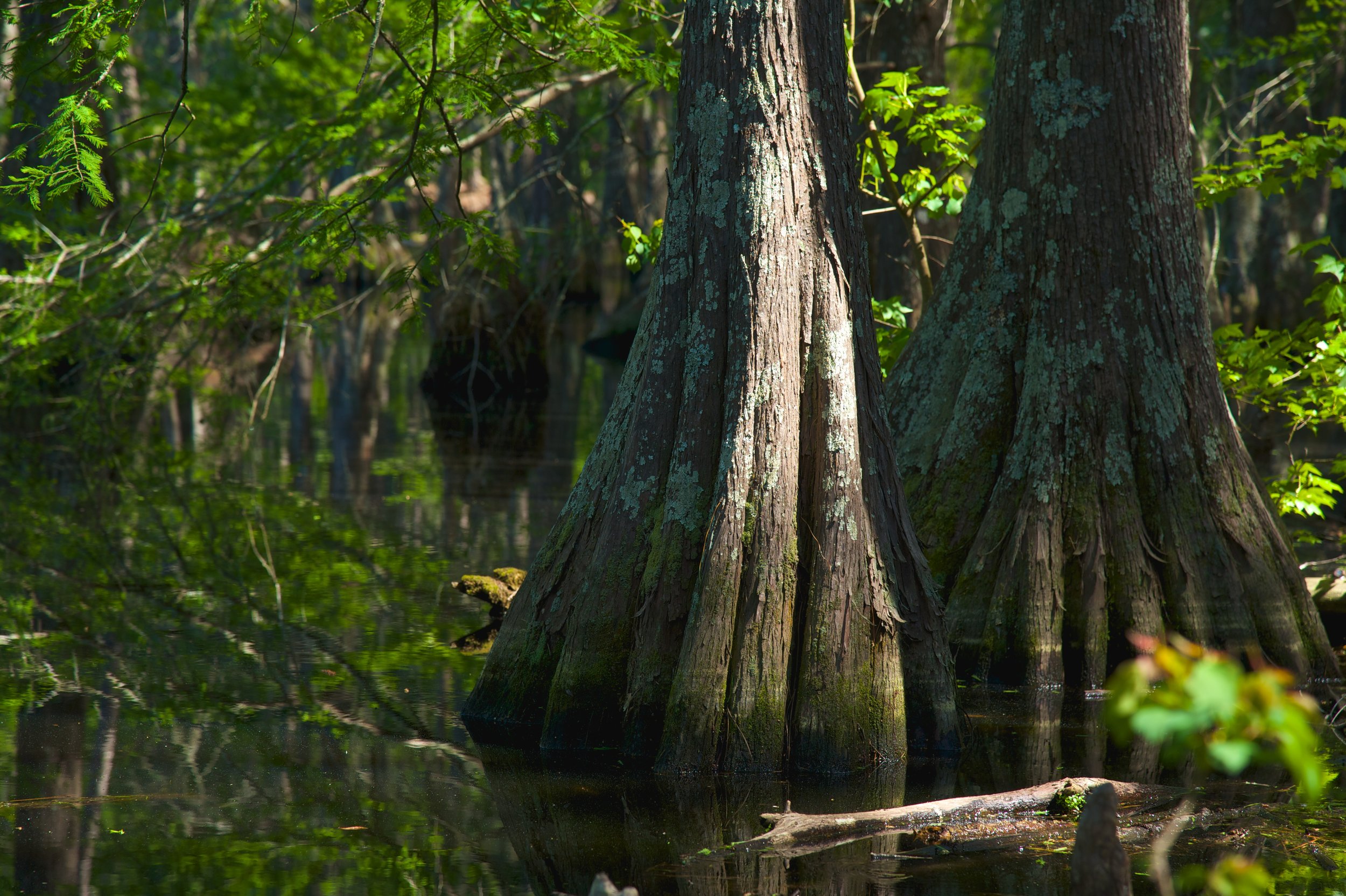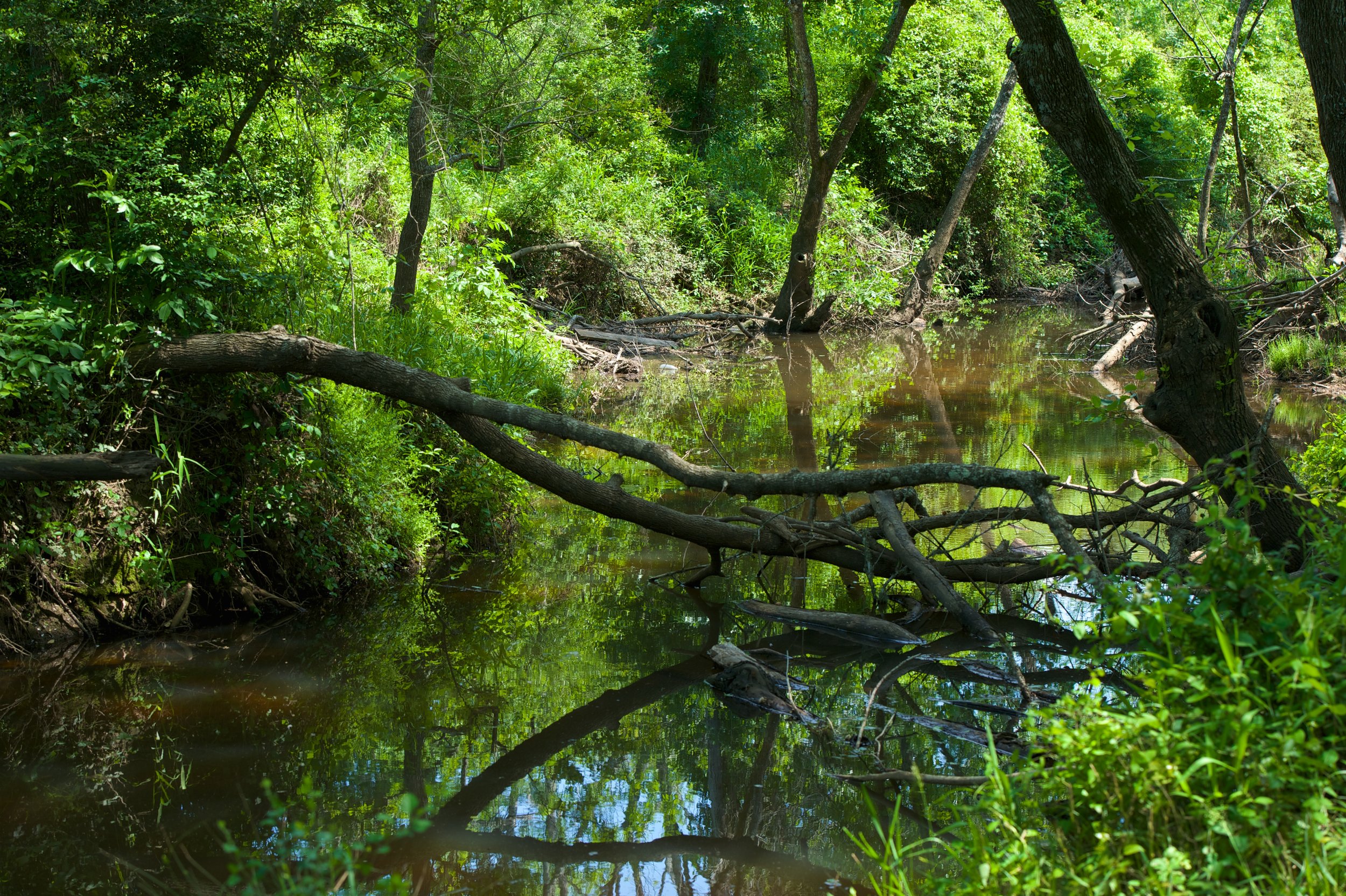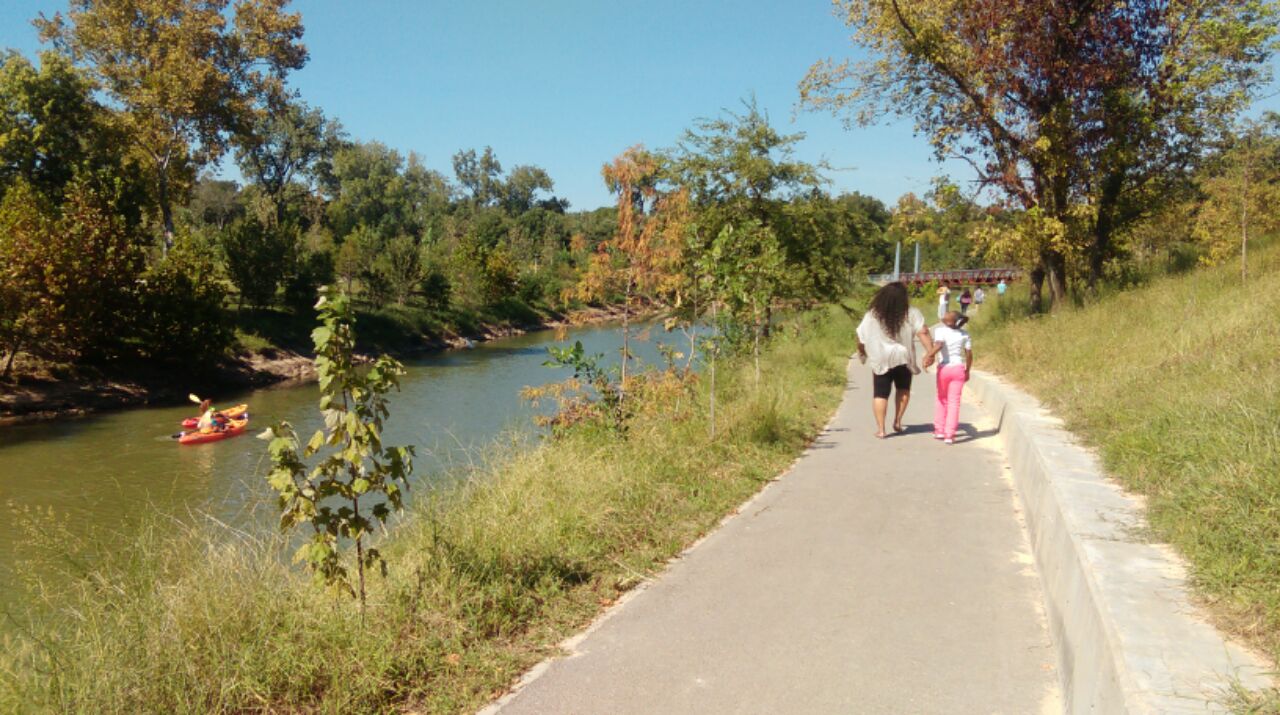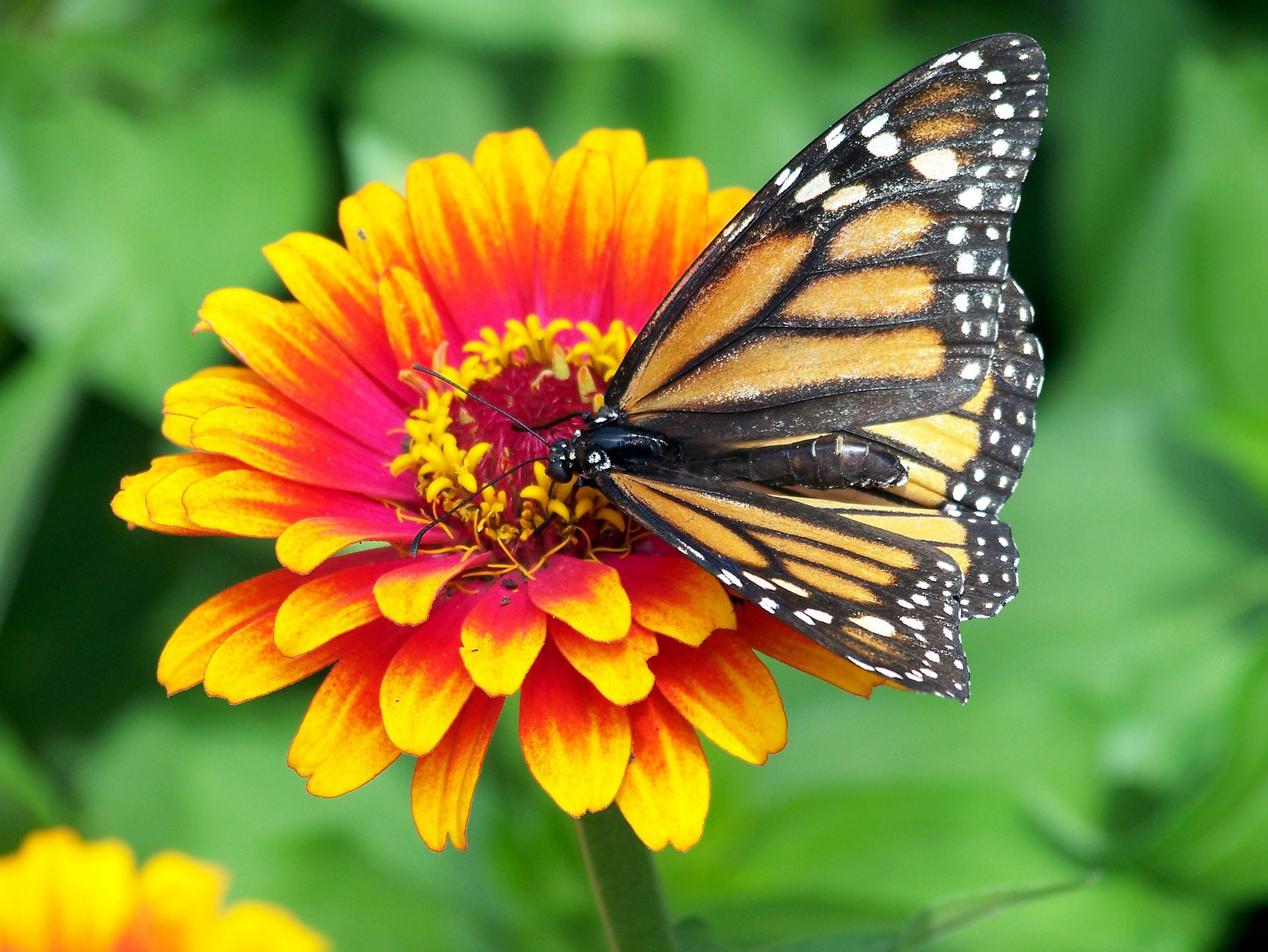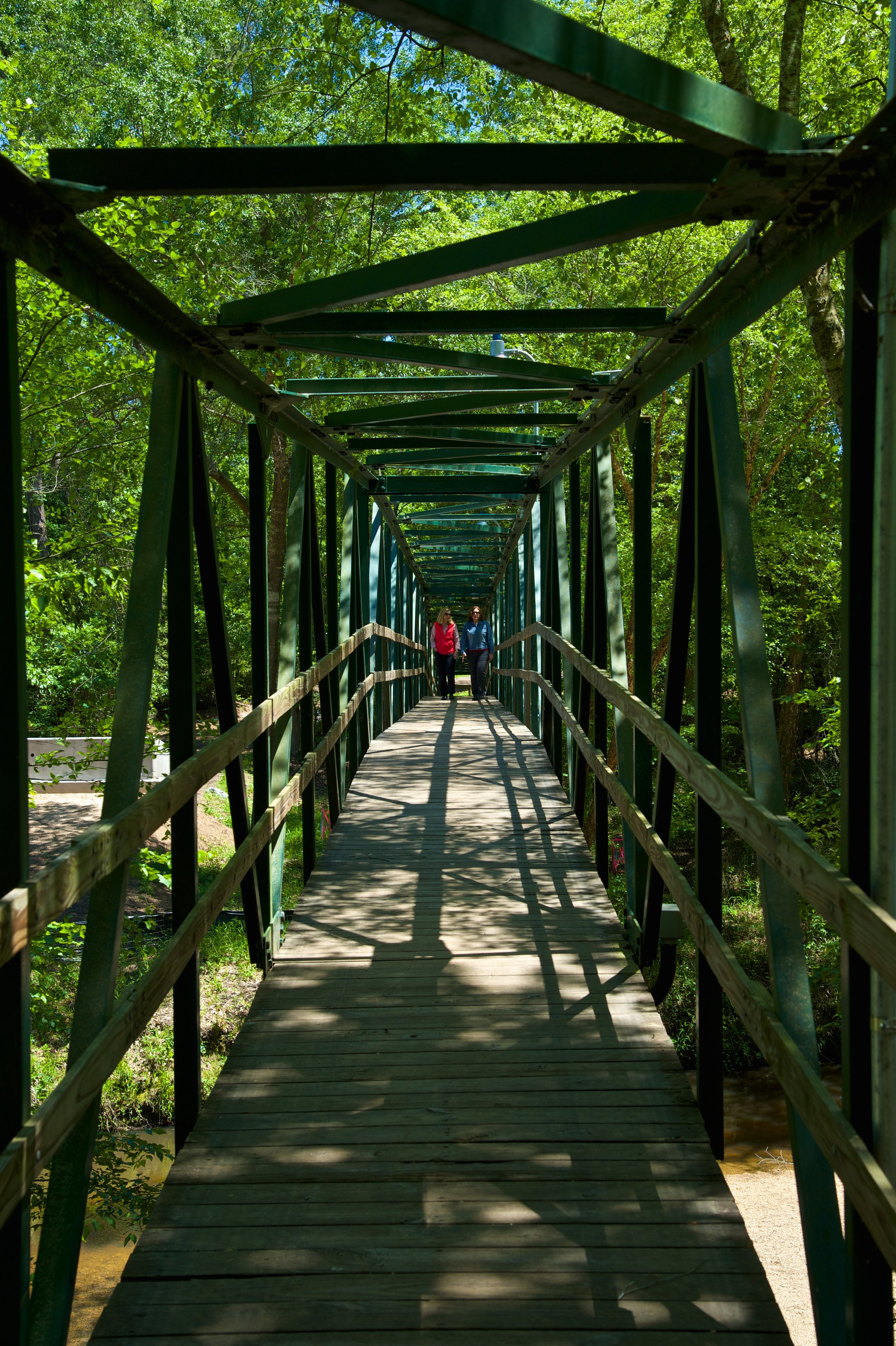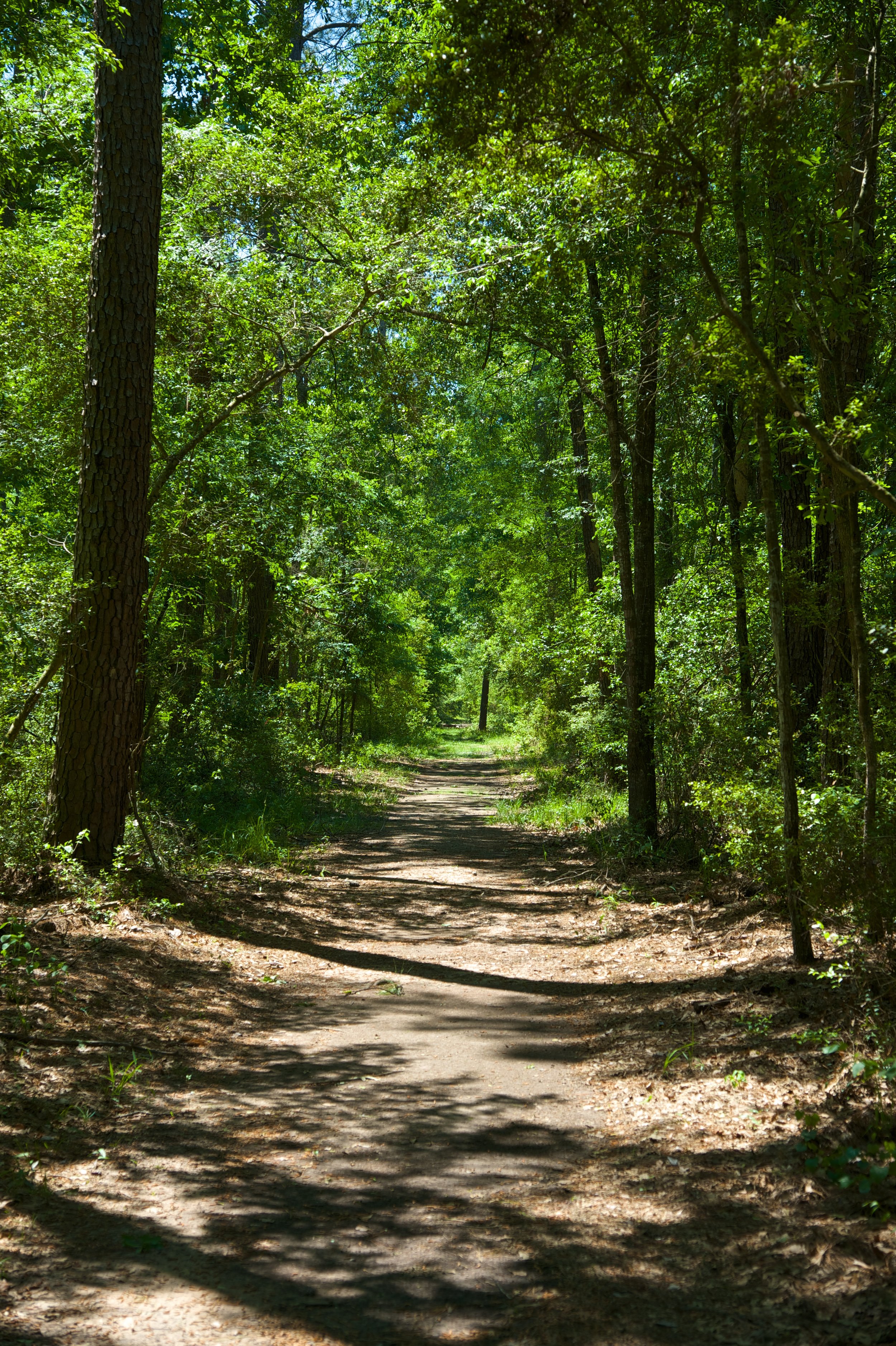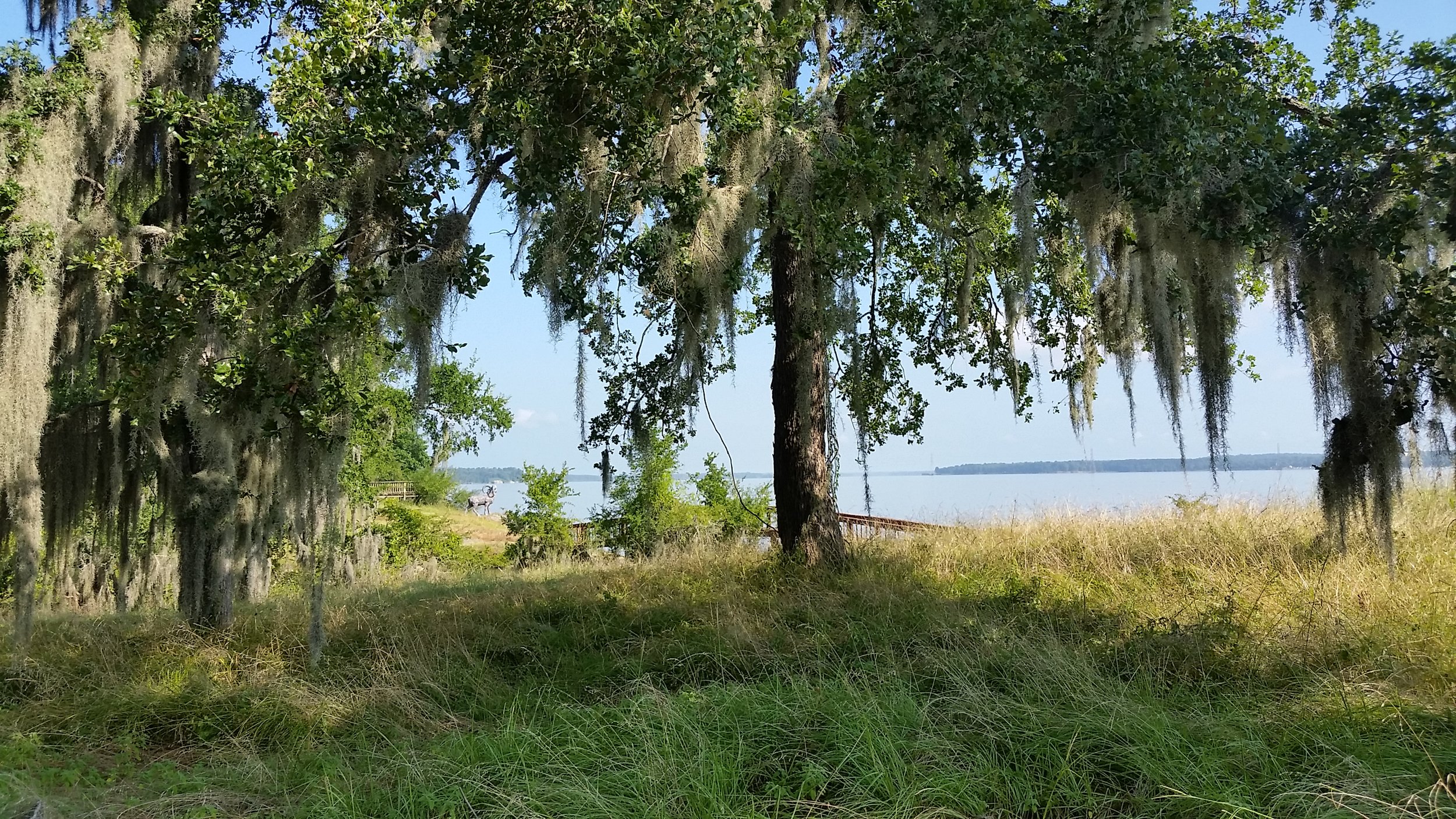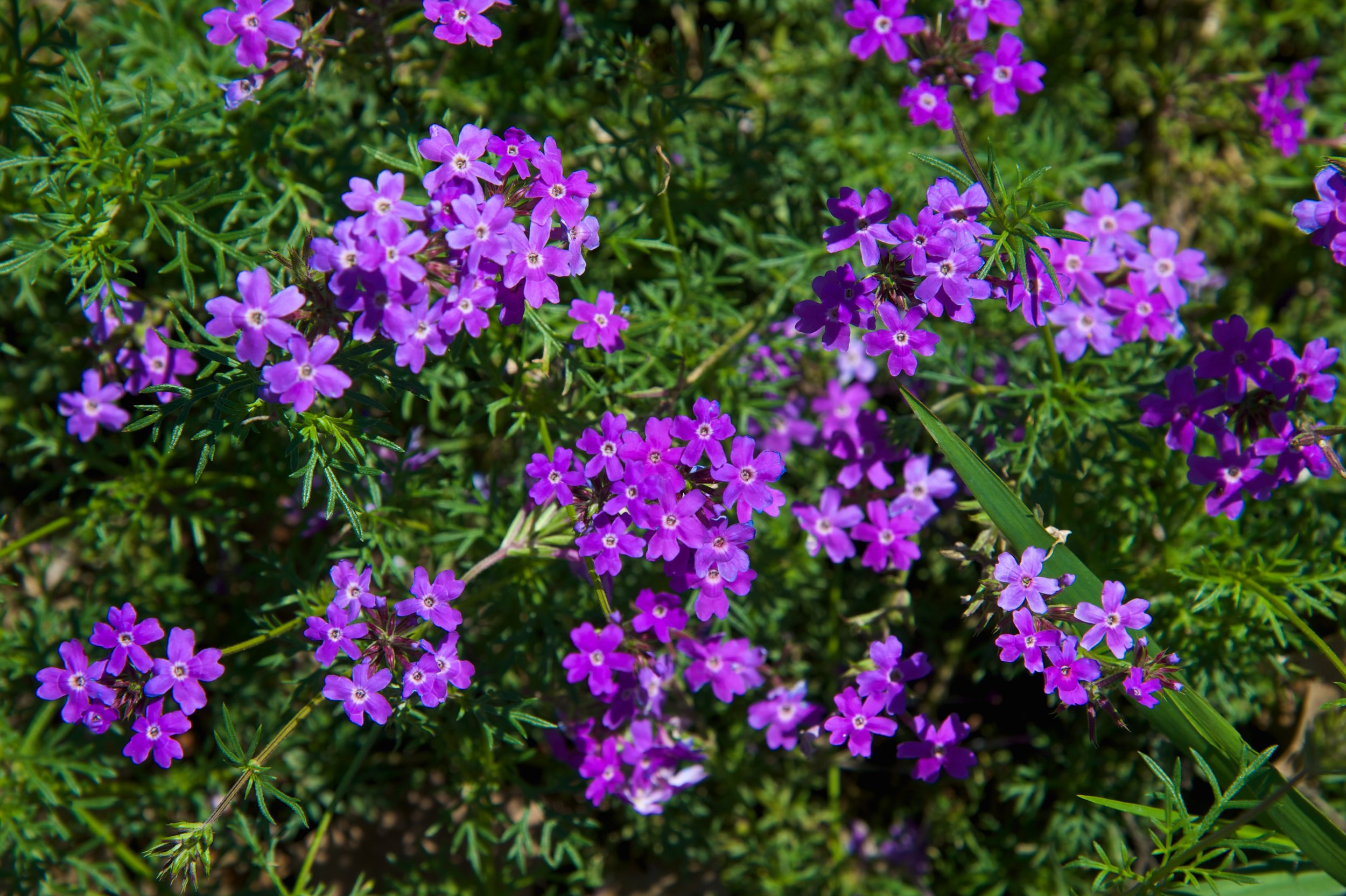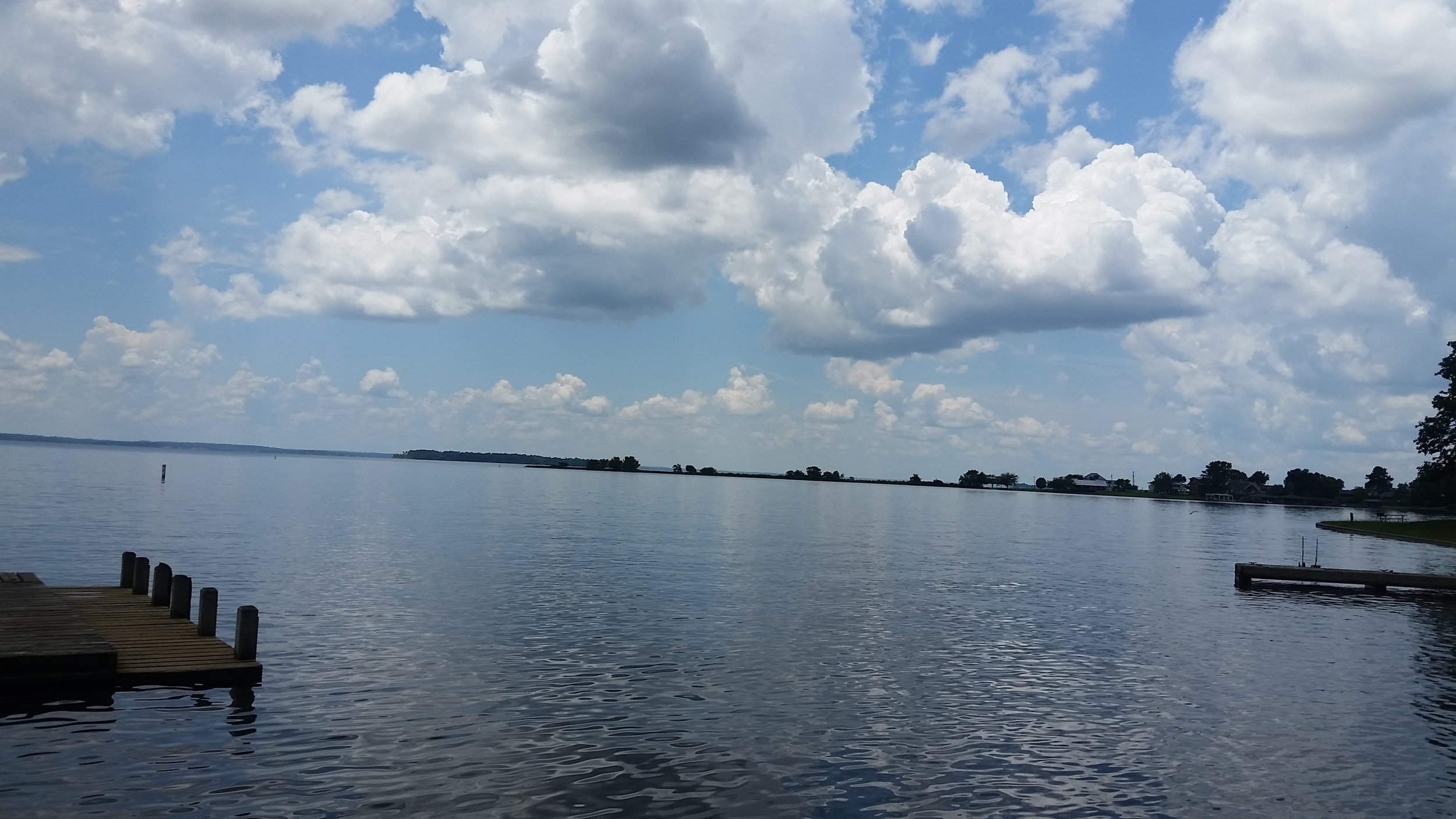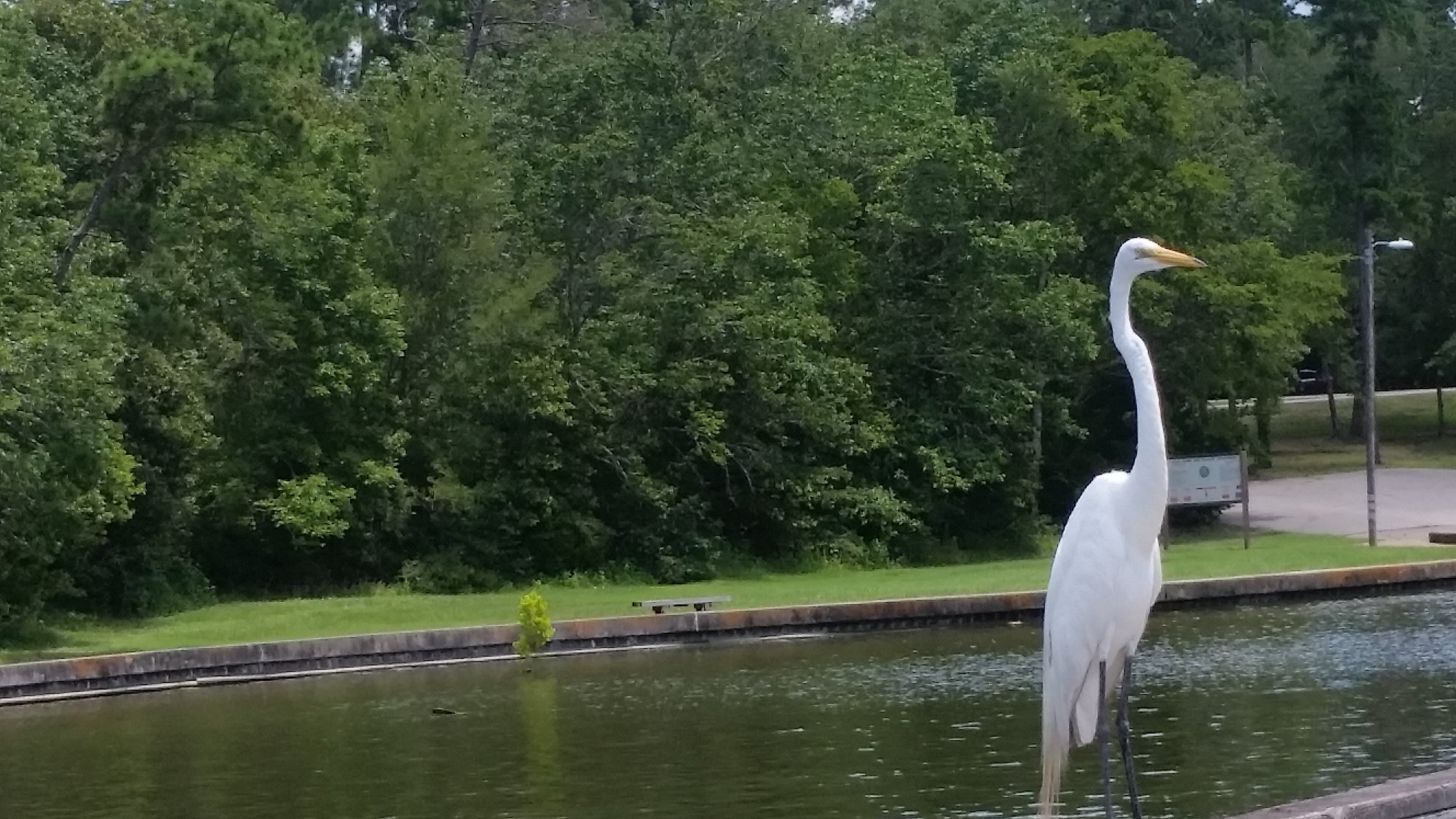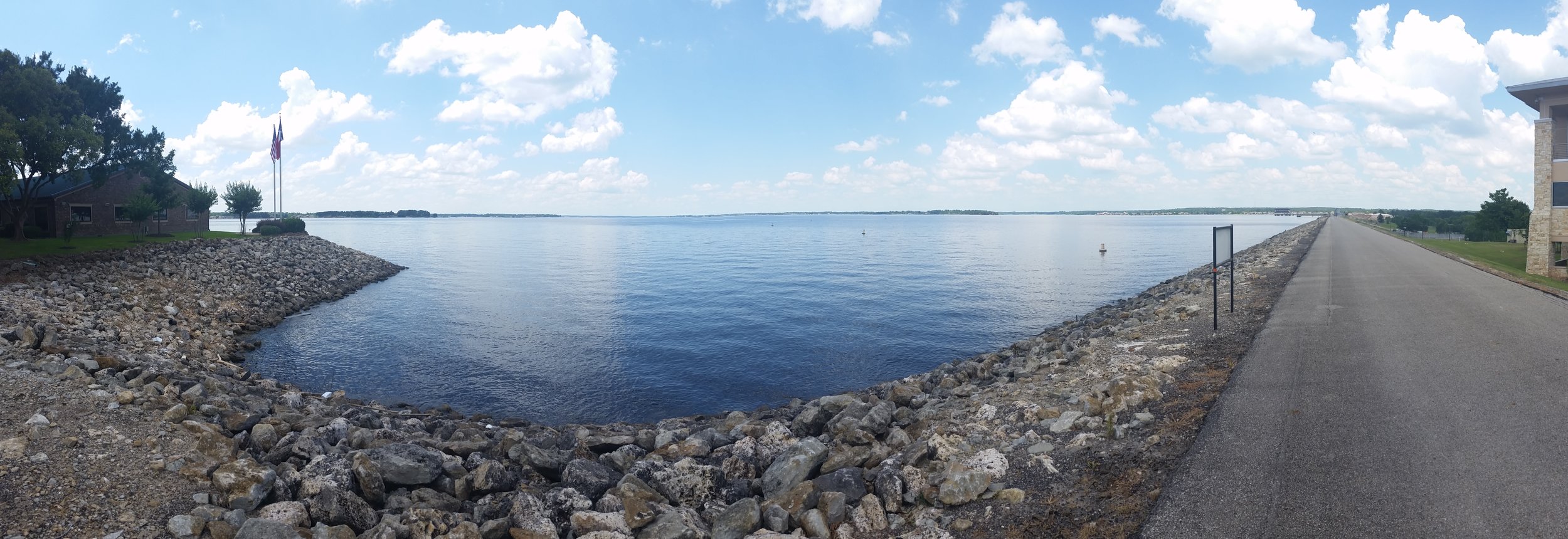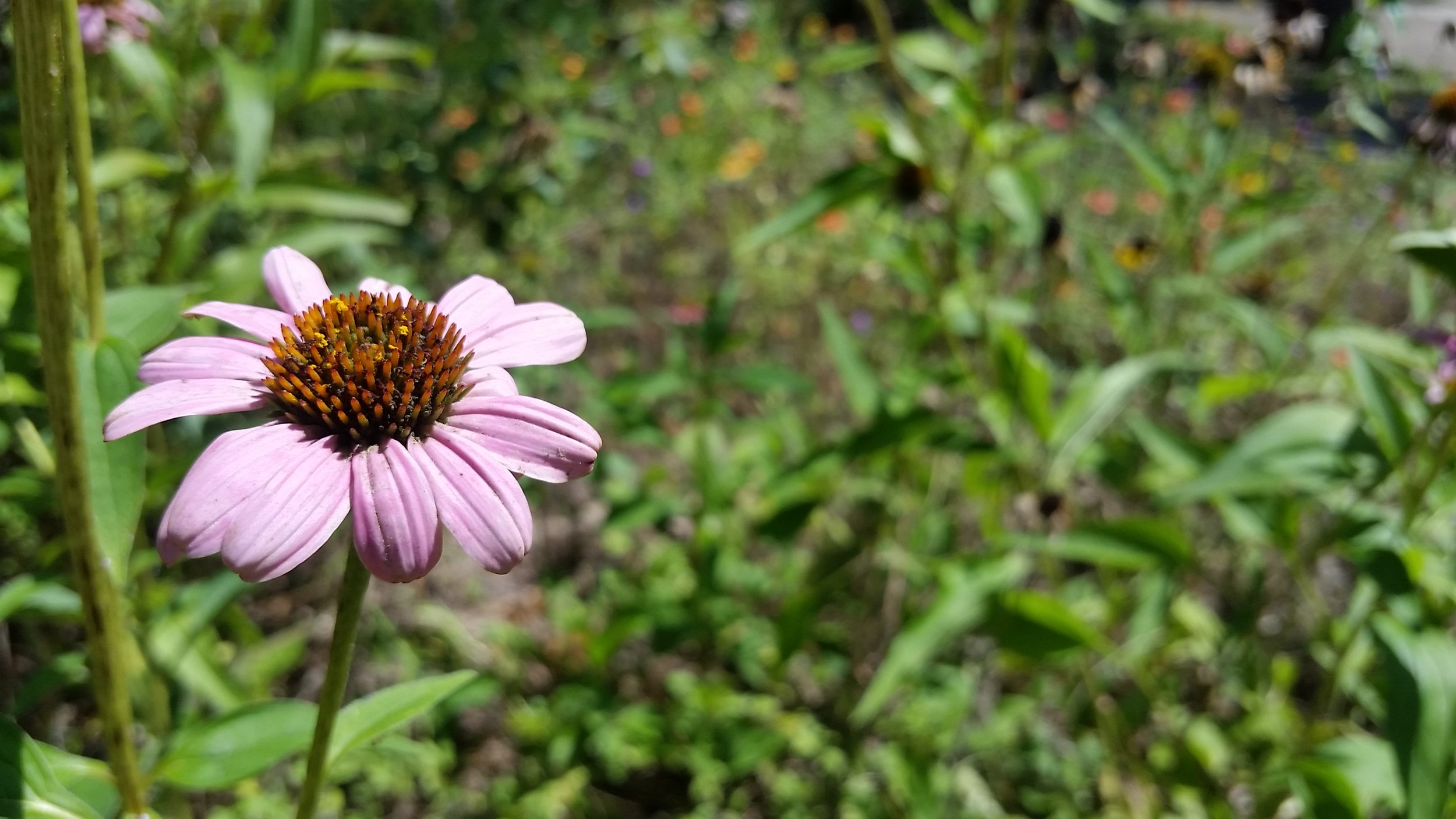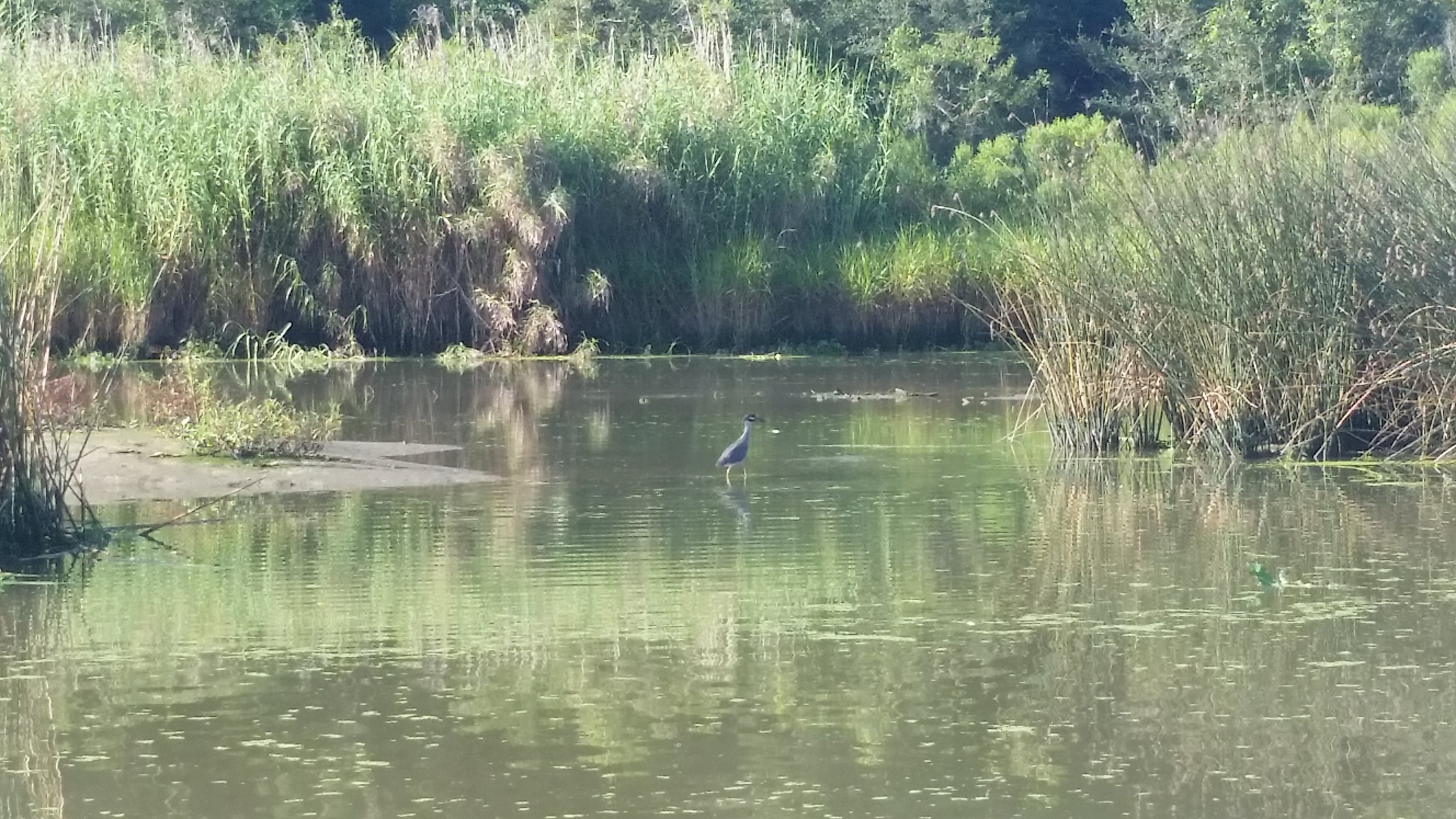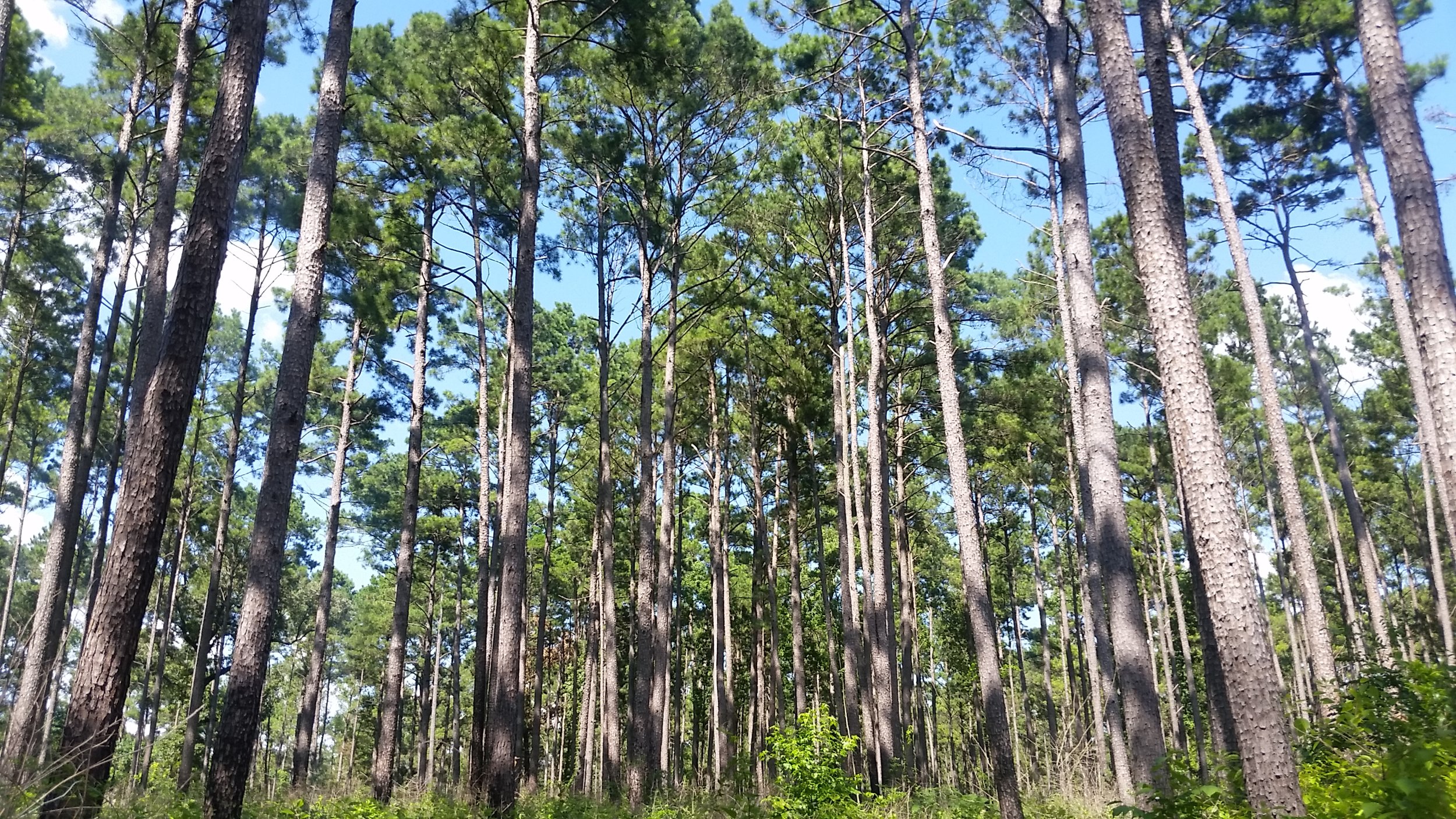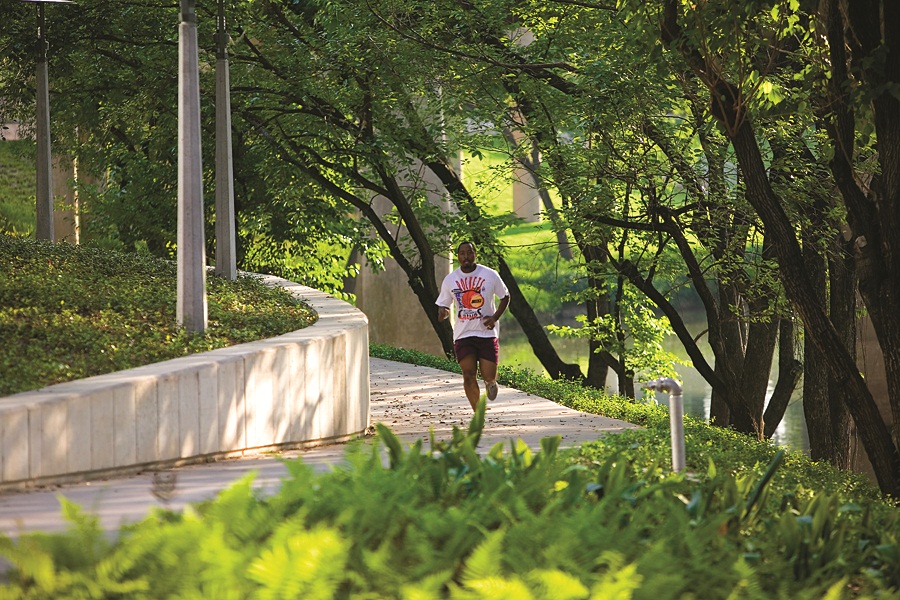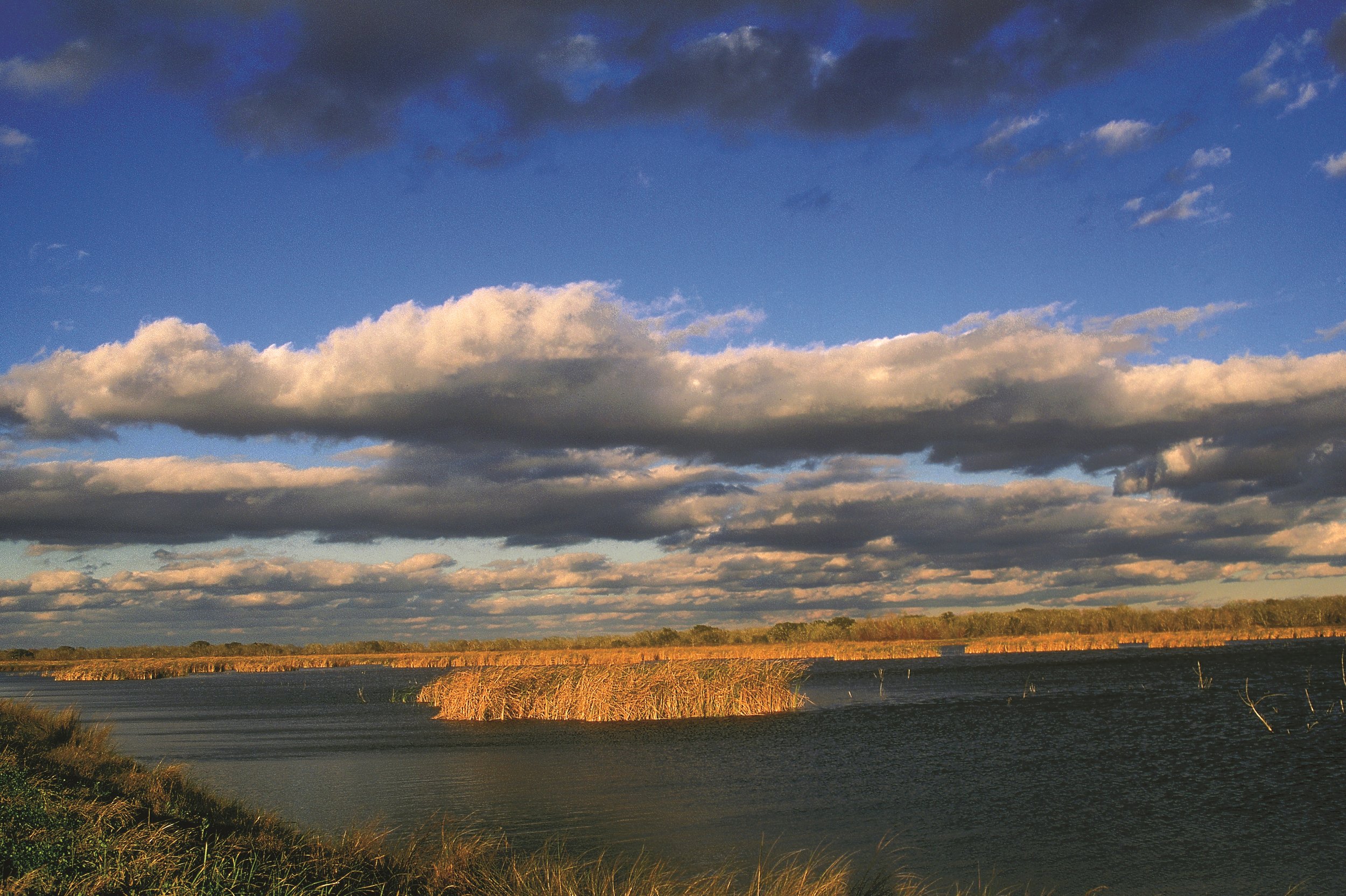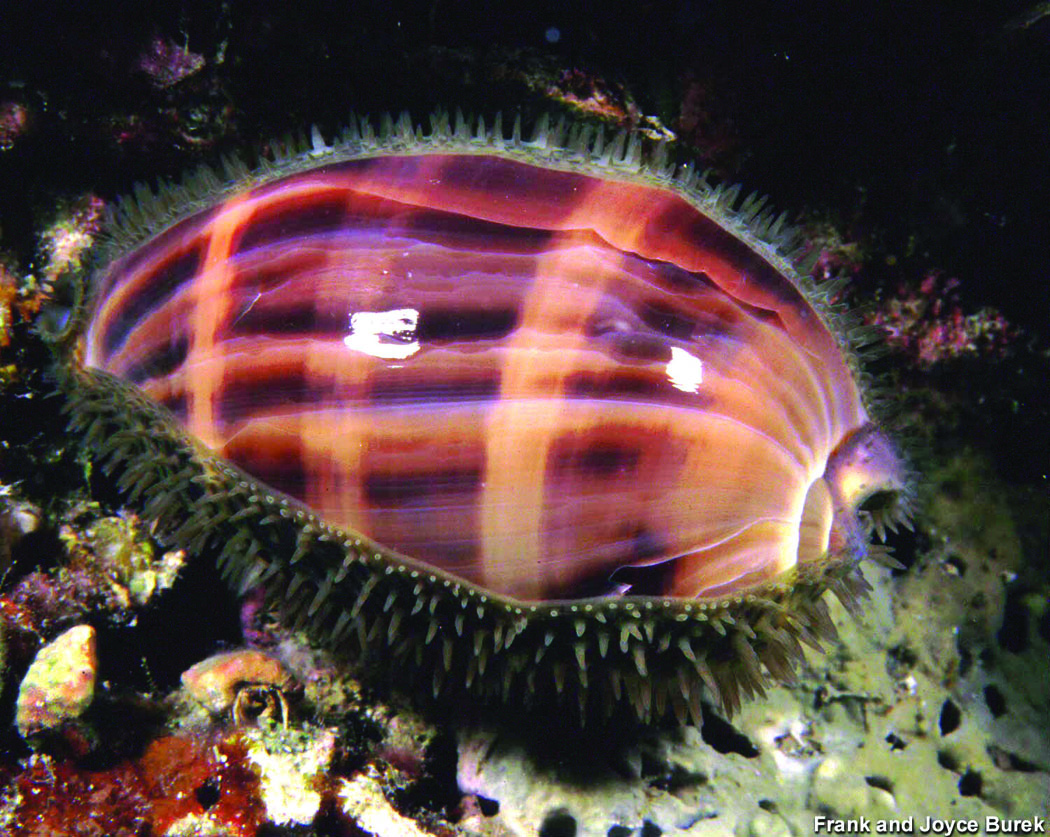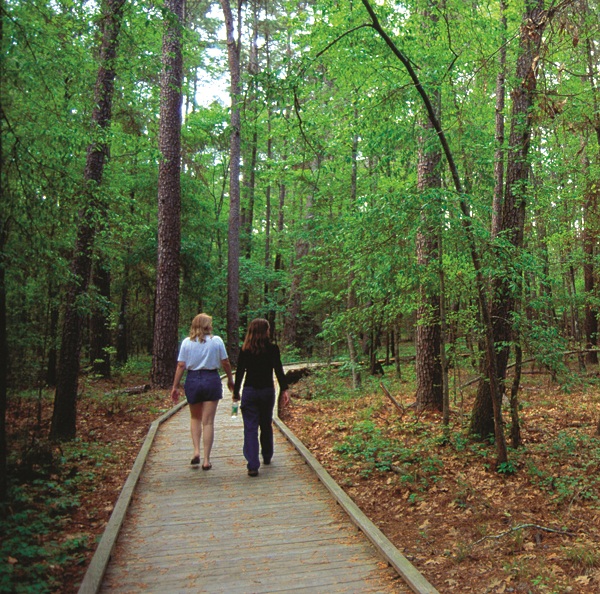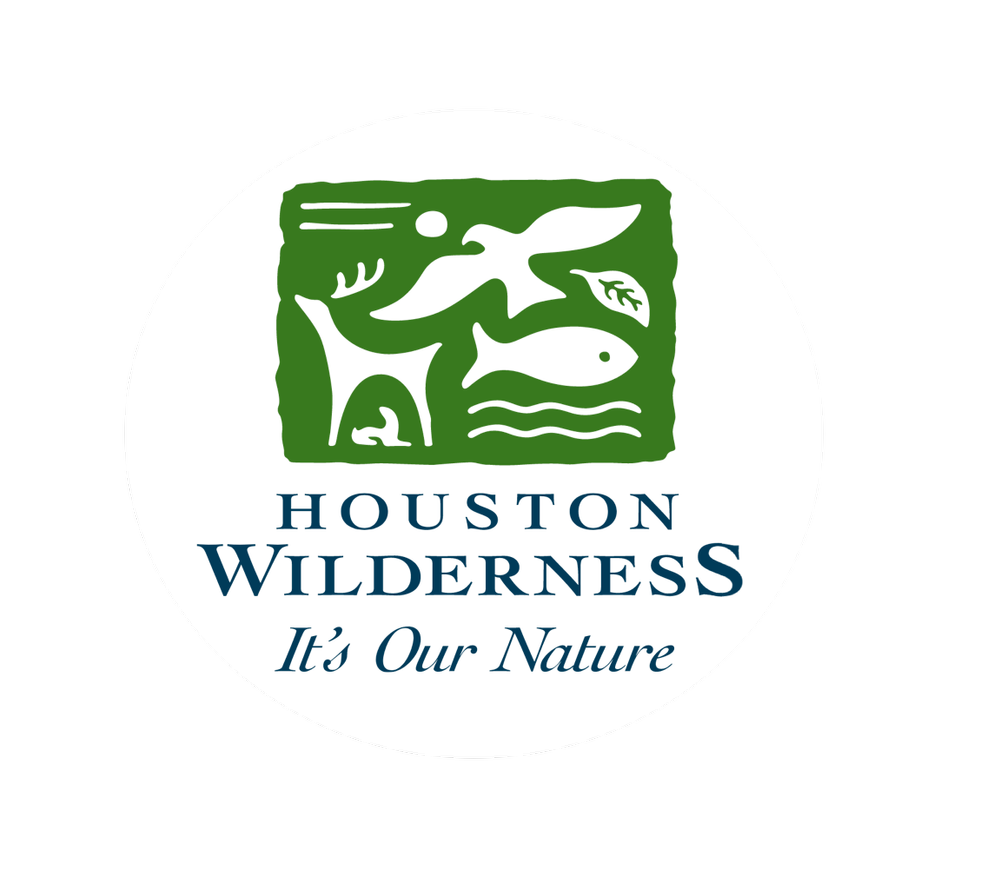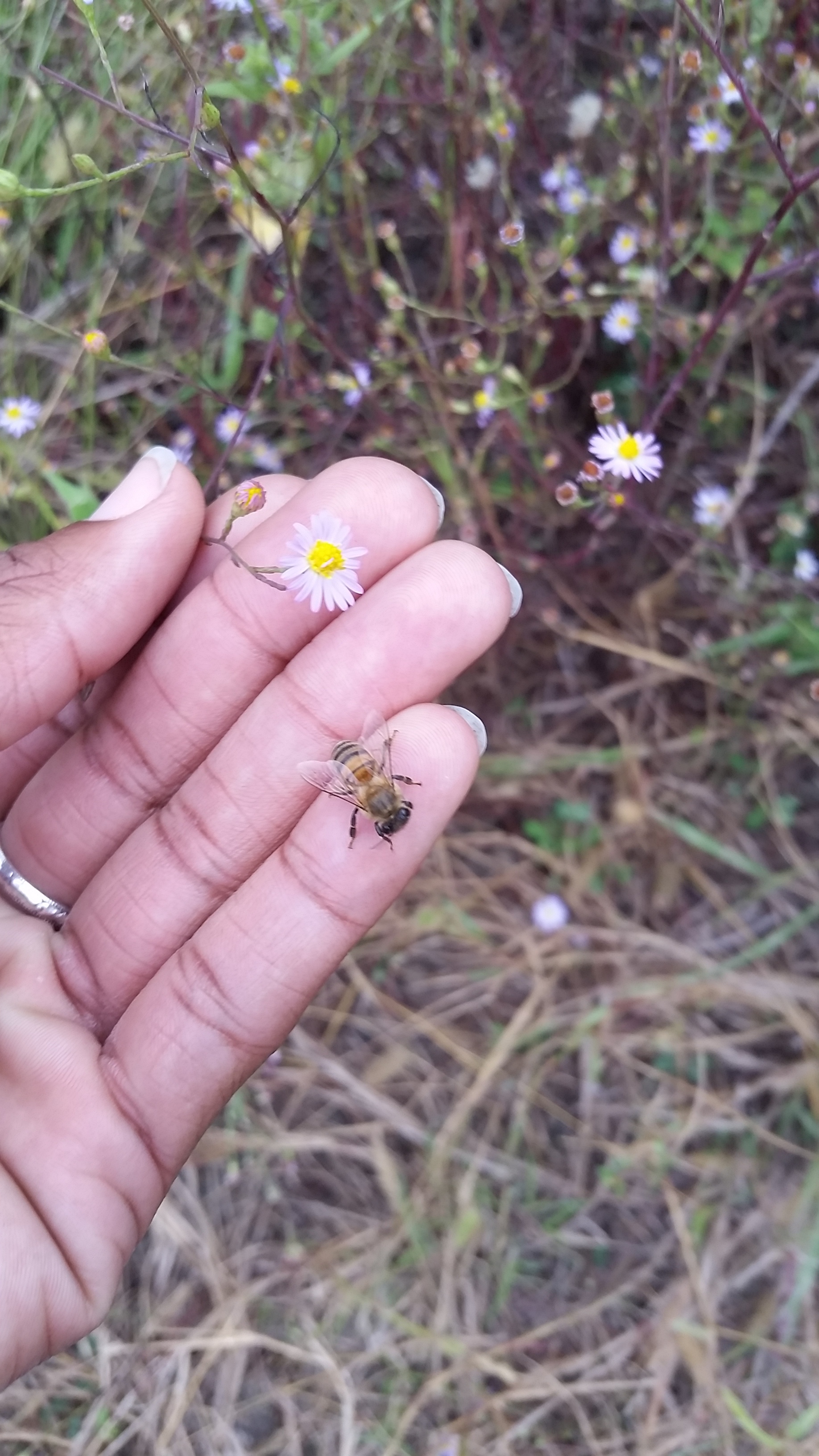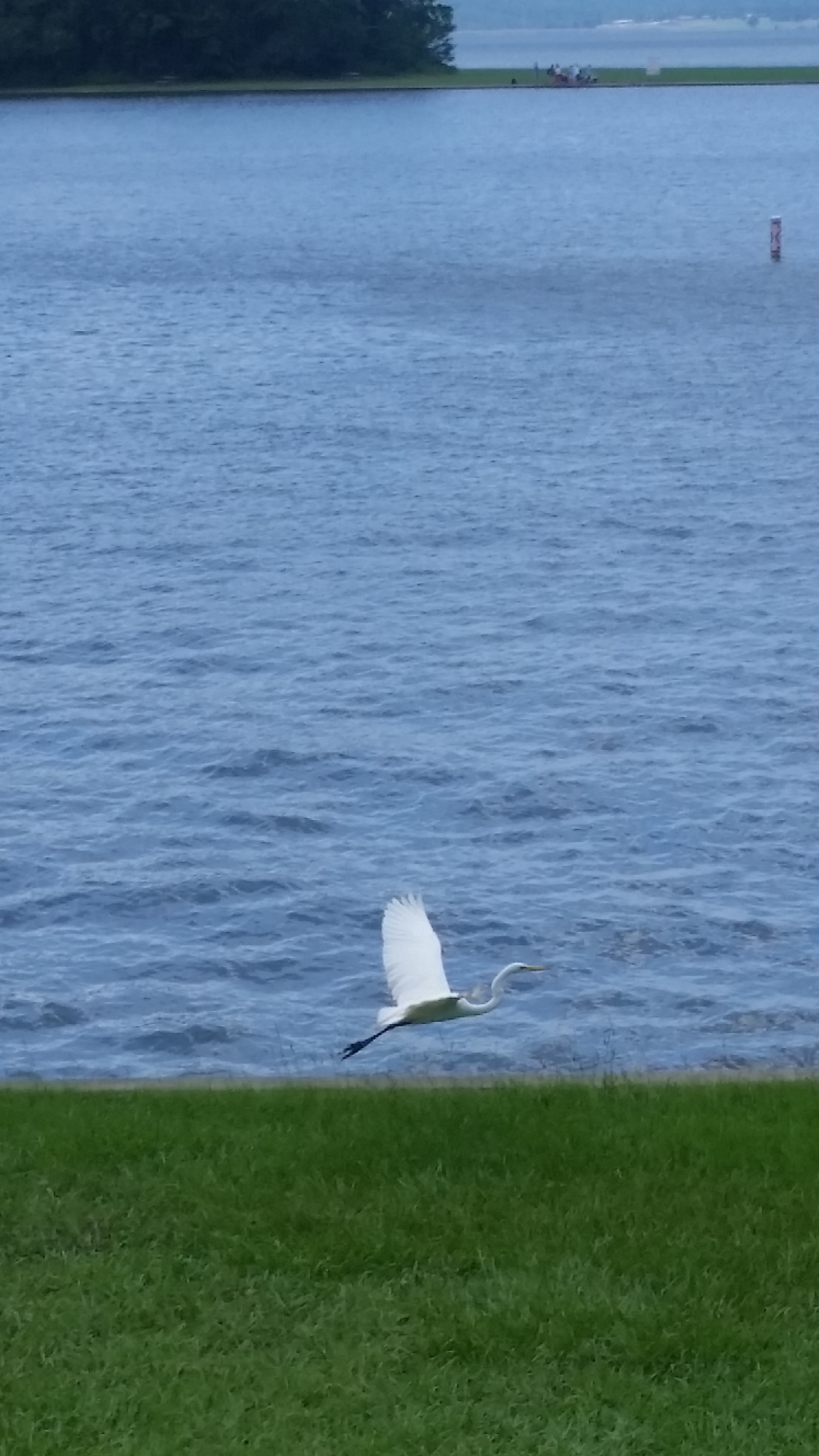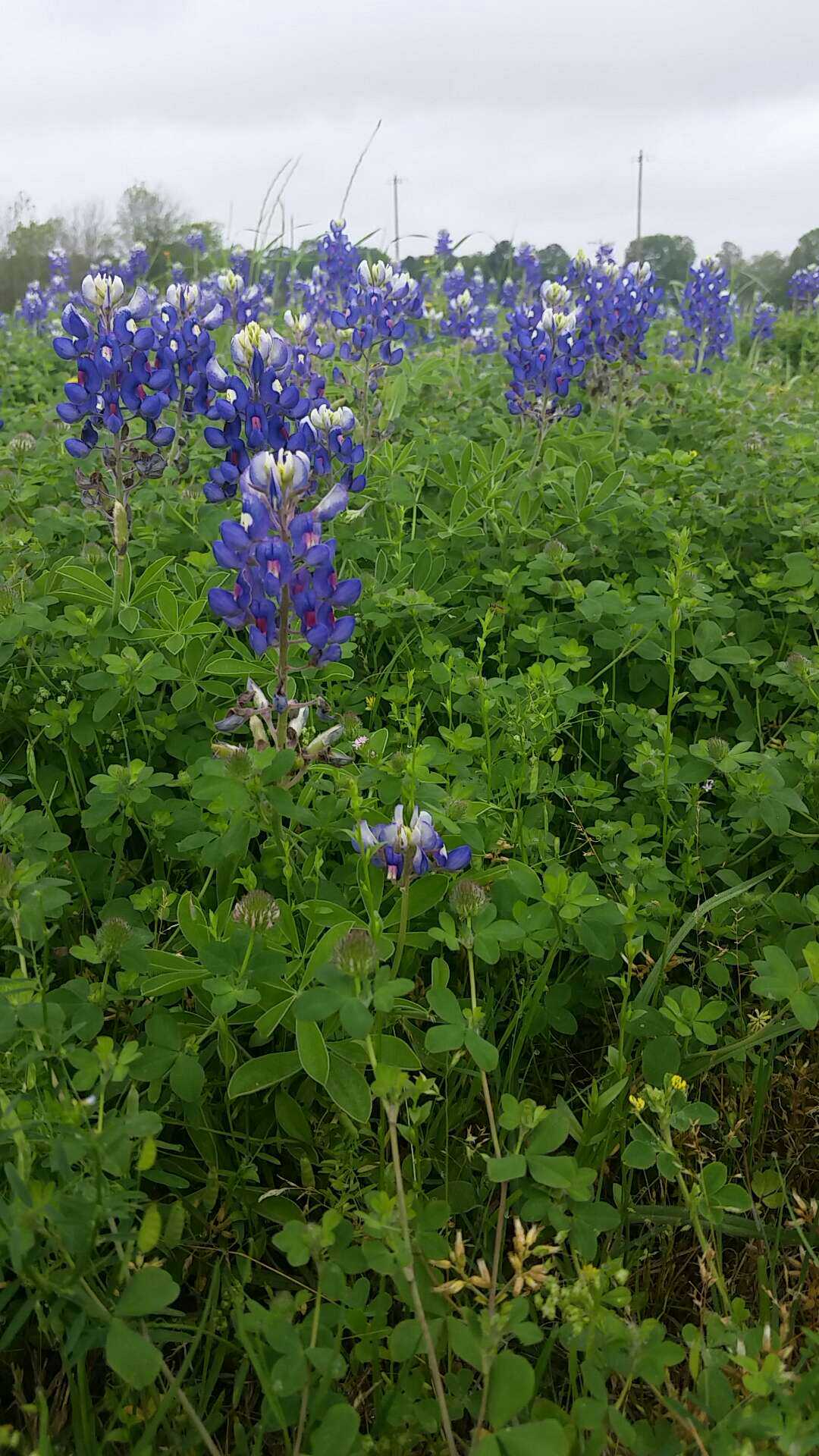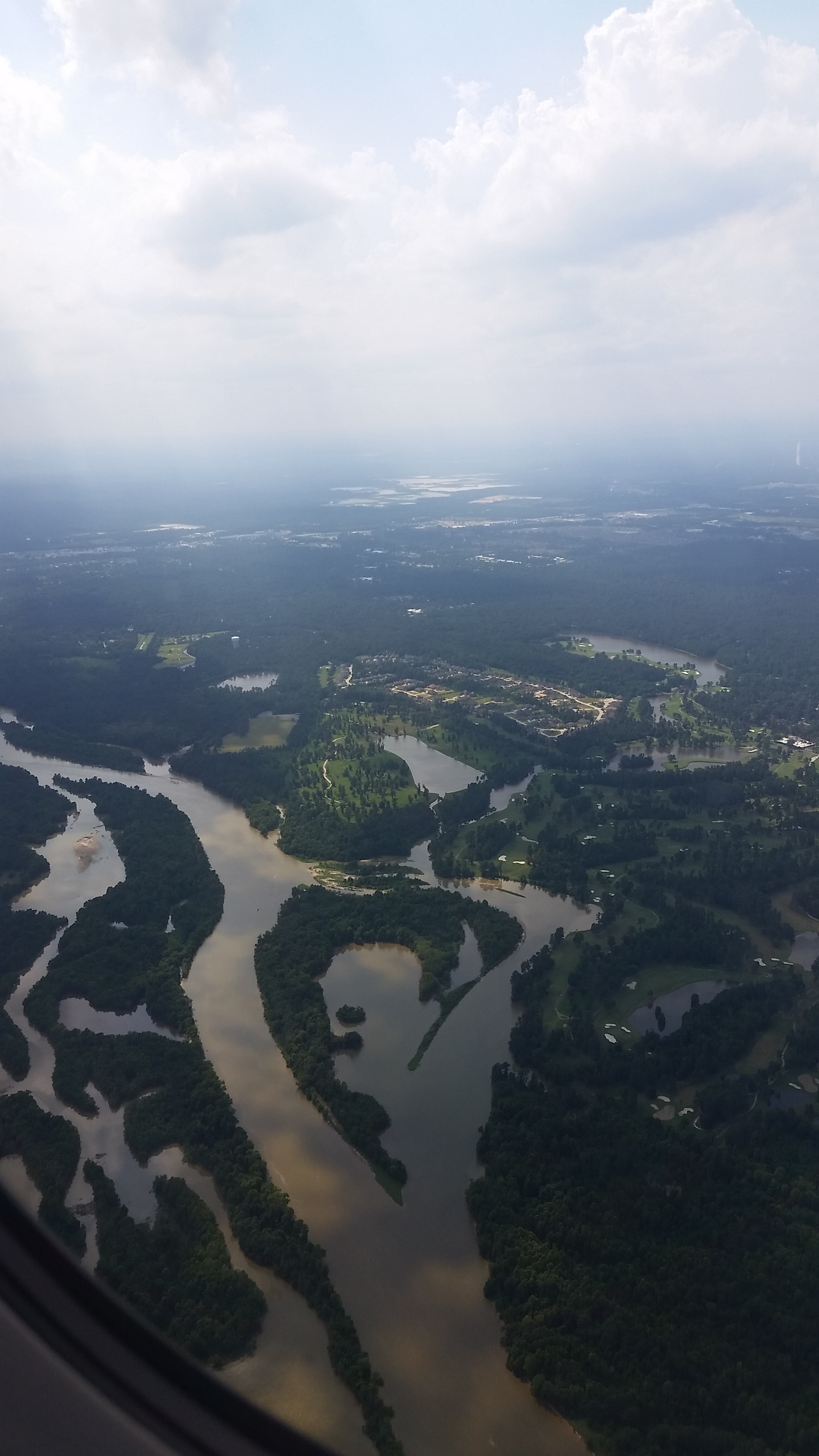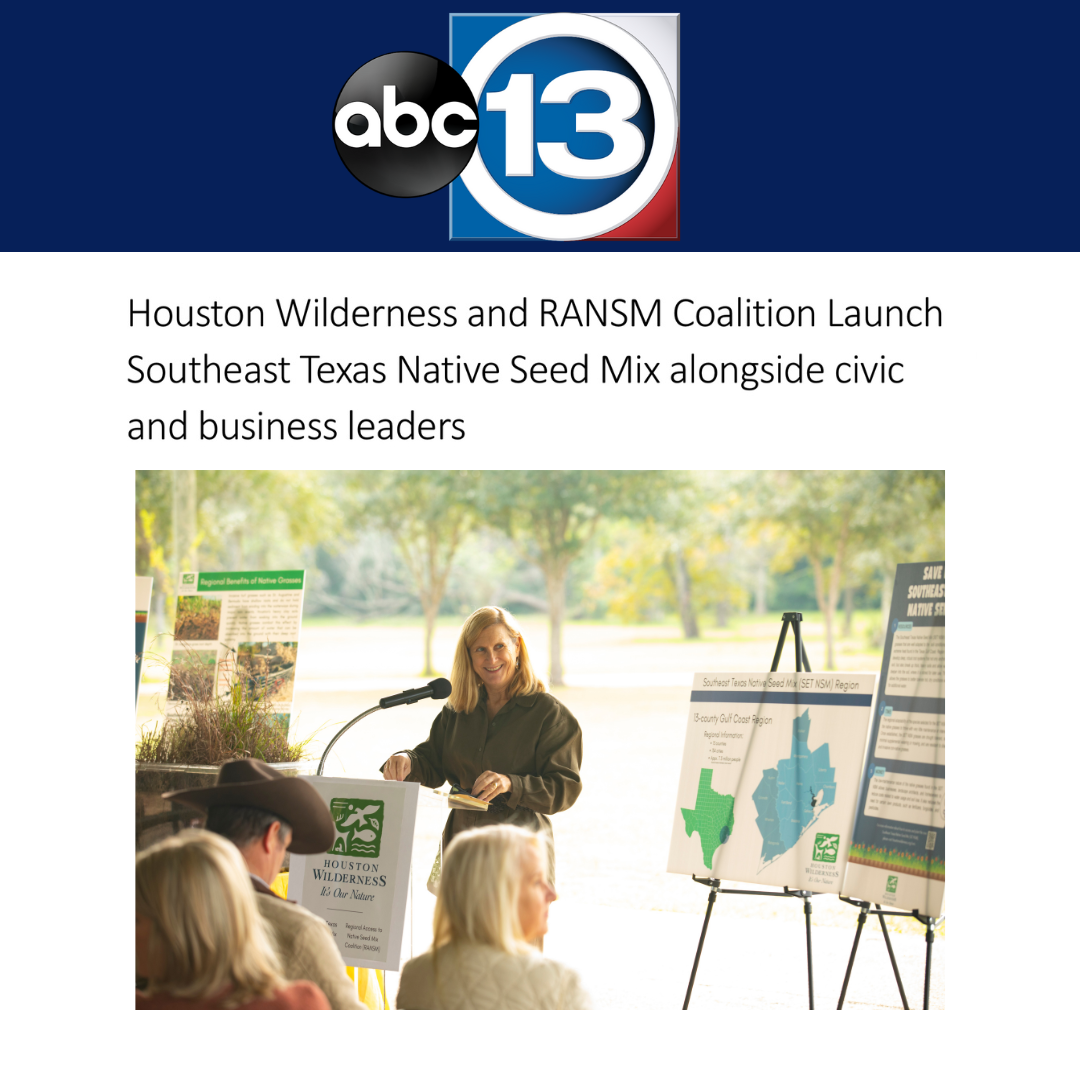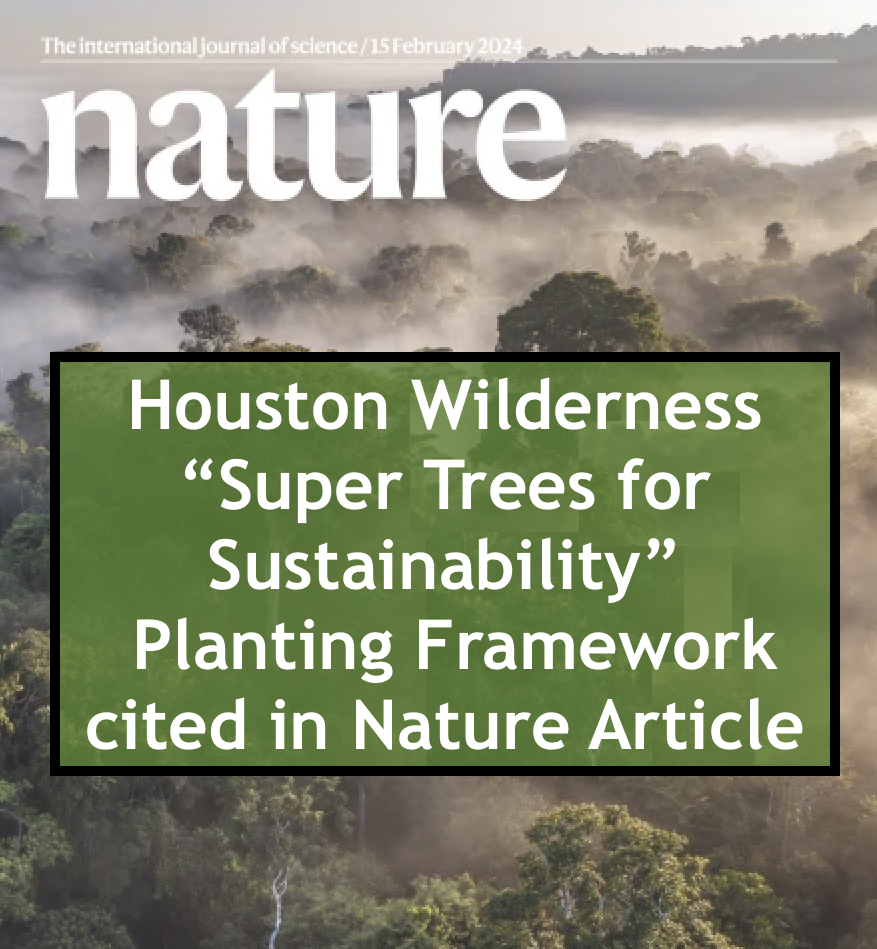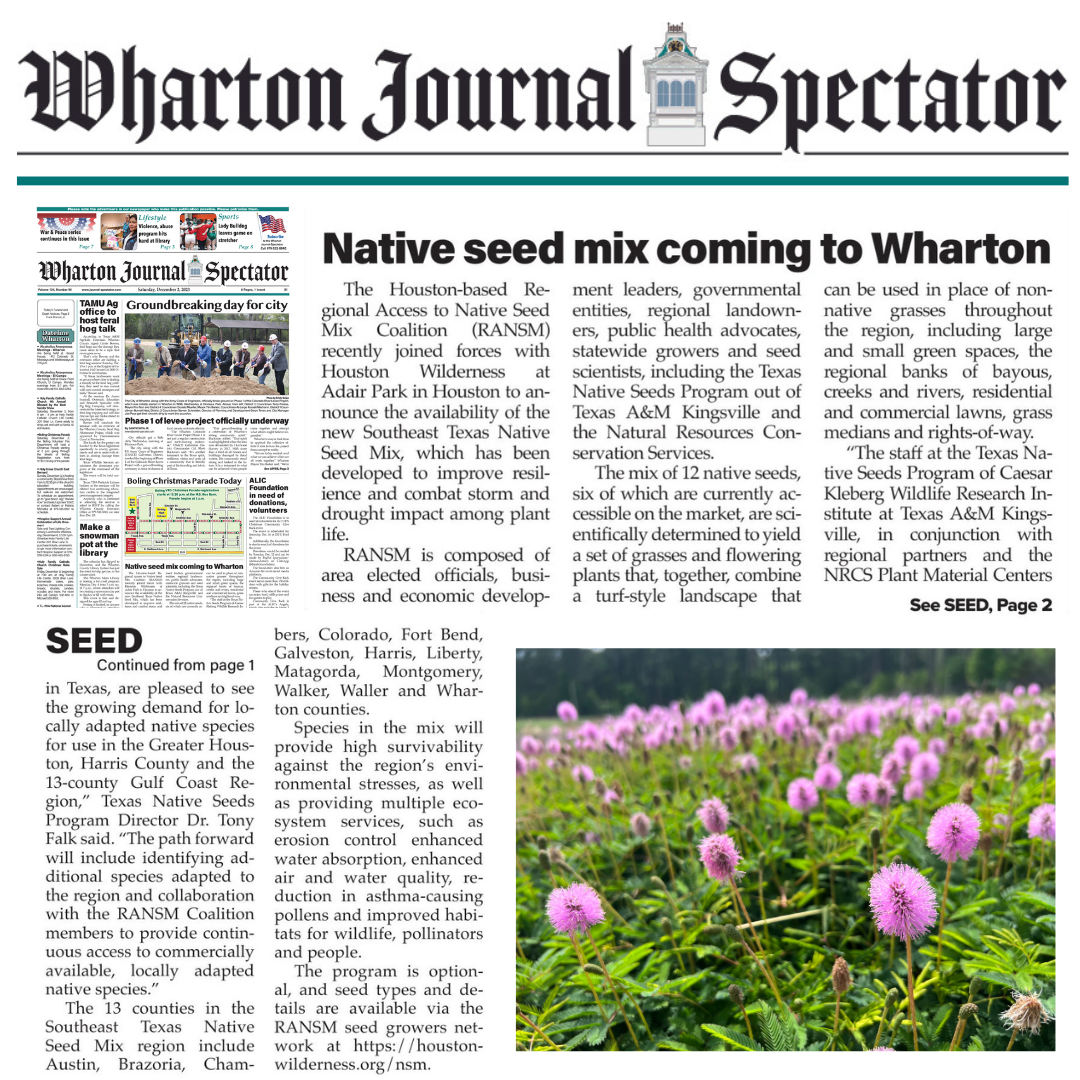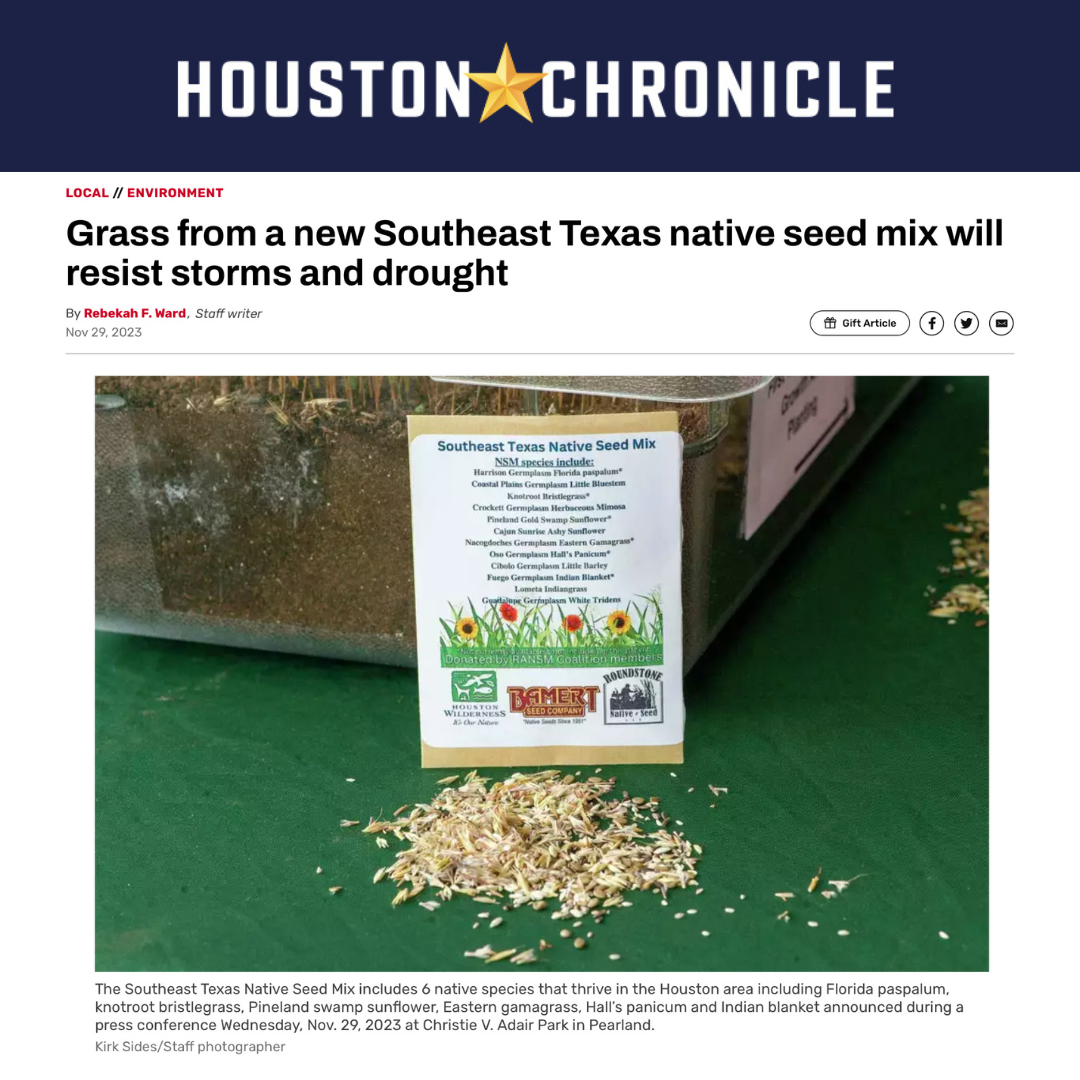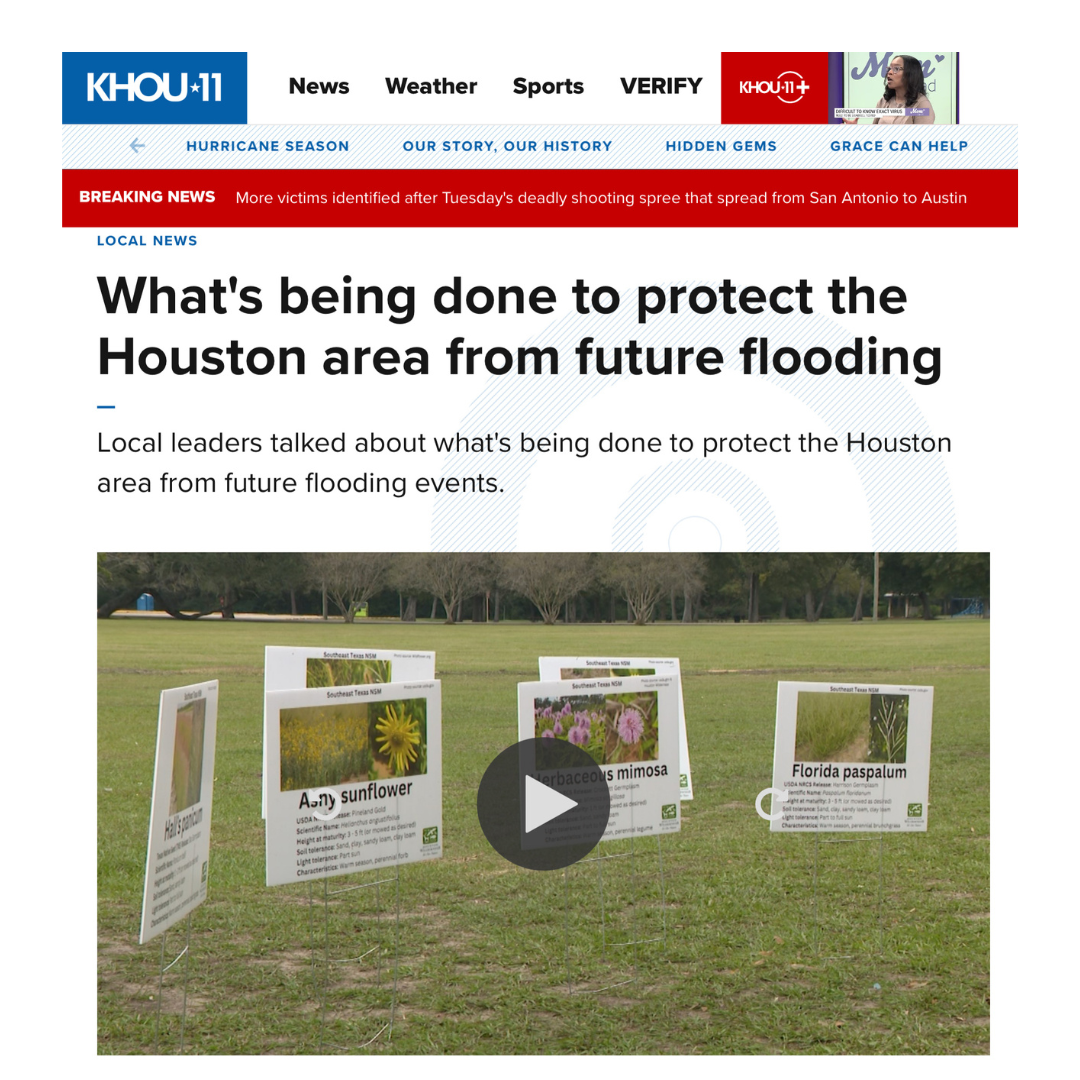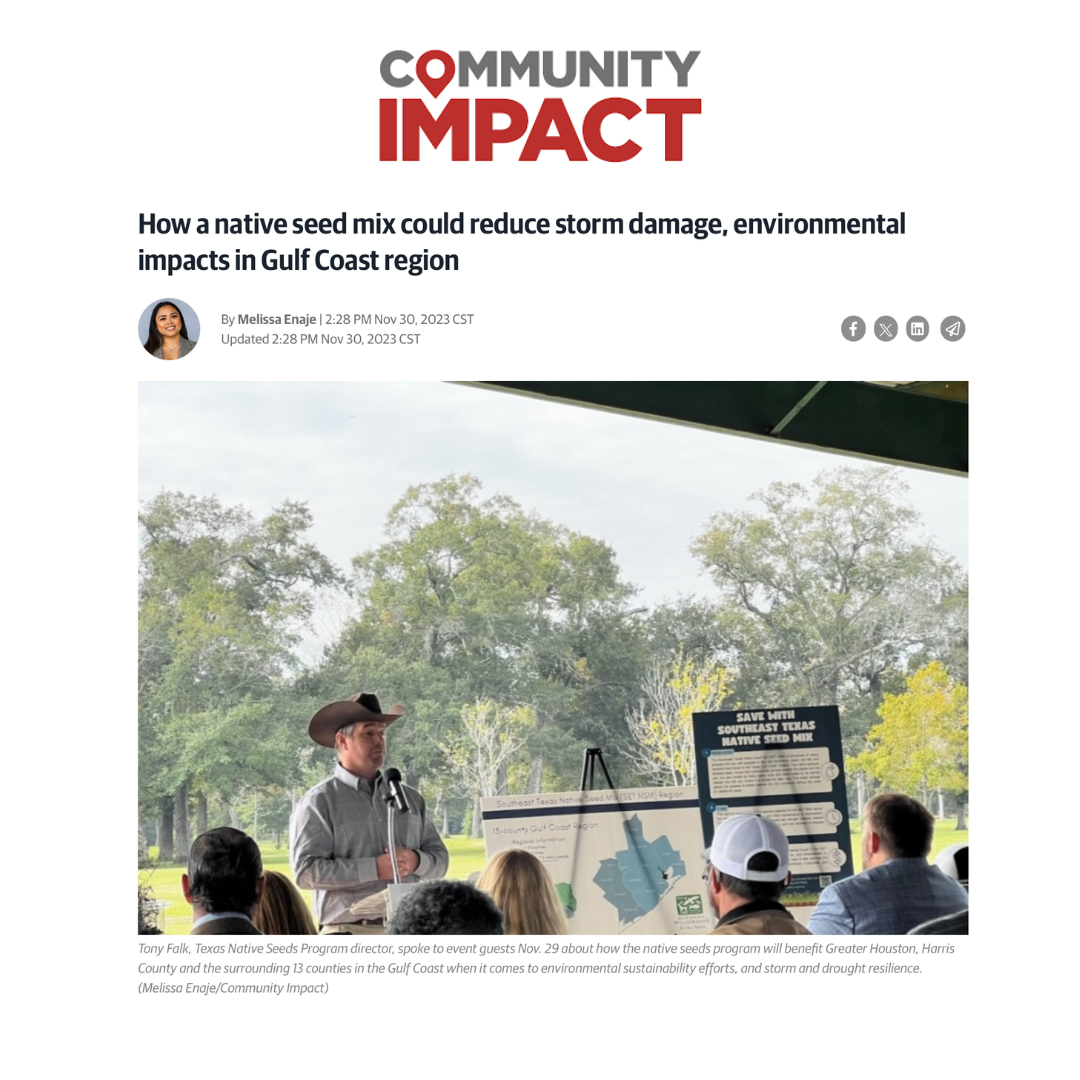Houston Wilderness
Our Mission:
HOUSTON WILDERNESS works with a broad-based alliance of business, non-profit and government interests to protect and promote the 10 diverse ecoregions of the 20+ county area around Greater Houston, Galveston Bay, and the Texas Coast, including coastal prairies, forests, wetlands, and waterways
Accomplishing Our Mission - Houston Wilderness promotes, protects and preserves the 10 ecoregions in multiple counties in Texas through facilitation of large-scale environmental policy initiatives including: 1) the 20-county Gulf-Houston Regional Conservation Plan-2nd Decade (RCP), 2) the collaborative Super Trees for Sustainability Initiative that incorporates the 25-mile Houston Ship Channel (HSC) TREES Program, and the multi-county Riverine Targeted-Use-of-Buyouts (TUBs) Program, 3) the Southeast Texas Native Seed Mix Initiative, and 4) the Collaborative Grant-Organizing Program. We work with multiple stakeholders on collaborative environmental policy creation and implementation, funding, education and on-the-ground ecosystem services enhancements.
Houston Wilderness major programming includes:
Gulf-Houston Regional Conservation Plan (Gulf-Houston RCP) – a decade-long collaborative in which HW facilitates a Steering Committee of environmental, business and government entities to work toward reaching the RCP’s 3 key goals – 1) targeting additional protected/preserved (P/P) green space in the more urban 8-county region by increasing the current 16.3% in protected/preserved land in the eight-county region to 24% of land coverage by 2040, 2) implementation of green and blue infrastructure enhancements by increasing and supporting the region-wide land management efforts to install nature-based stabilization techniques, such as low-impact development, living shorelines, and bioswales, to 50% of land coverage by 2040, and 3) substantial installation of native vegetation annually that provides carbon ecosystem increases in the 20-county Gulf-Houston Region through research, education and mulitple collaborative projects (see more at https://houstonwilderness.org/gulf-houston-regional-conservation-plan). RCP Two-Pager can be found here.
Collaborative Grant Organizing Program- Houston Wilderness works with multiple stakeholders and federal/state agencies on collaborative grant proposals and funded projects, often in “pioneering” areas of environmental planning and resilience in the Greater Gulf-Houston Region. Since its creation, the CGO Program has brought thousands of additional dollars to over 210 partners in our region and, most recently, has helped establish multi-partner environmental projects/programs in these areas: 1) Targeted large-scale tree plantings in non-traditional urban locations to improve ecosystem services along industrial corridors and EJ communities, 3) establishment of native grass seed mixes to replace non-native grasses for use along riparian corridors, on public and private plans and detention basins, and 4) intallation of native grass bioswales that provide ecosystem services enhancements on public buyout lands.
Super Trees for Sustainability Initiative – Houston Wilderness’ Super Trees for Sustainability Initiative is a multi-year, large-scale native tree planting collaborative that incorporates the 25-mile Houston Ship Channel (HSC) TREES Program and the multi-county Riverine Targeted-Use-of Buyouts (TUBs) Program (see below), as well as other targeted urban forestry projects in communities around the 13+ county region that enhance biodiversity and reduce health risks associated with urban heat, air and water pollution and flooding. HW focuses on planting native Super Trees that it identified in tandem with Rice University and the Houston Health Department. Super Trees are native tree species that provide the highest levels of Ecosystem Services; in particular, carbon absorption and sequestration, air pollution and flood mitigation, erosion control, and urban heat island reduction. The research conducted to identify the Super Trees also involved creating a framework for selecting targeted locations to plant in communities that experience outsized flooding, air pollution and urban heat effects, as well as engaging with partners who are not traditionally involved in reforestation and climate change adaptation work. Effectively, the Super Trees For Sustainability Initiative advances Environmental Justice goals by working in and with communities subject to disproportionate environmental harm. The Super Trees One-Pager can be found here.
Houston Ship Channel Trees & Riparian Enhancement of Ecosystem Services (HSC TREES) Program - A multi-year collaborative project by Houston Wilderness and multiple private/public partners, focused on large-scale tree plantings along the 25 miles of the Houston Ship Channel, targeting native tree species that are ranked in priority based on their respective levels of air pollution absorption (including CO2, GHGs and PM) as well as water absorption and erosion control - called “Super Trees.” The HSC TREES One-Pager can be found here.
Riverine Targeted-Use-of-Buyouts Program - The Riverine TUBs Program implements Nature-Based Infrastructure (NBI) through large-scale native tree plantings, native grass bioswales, and riparian wetland re-establishment. These native tree and grass plantings take place at buyout properties adjacent to multiple downstream waterways in Greater Houston/Harris County, all of them flowing into western Galveston Bay. Under the Riverine TUBs Program, partners are enhancing, restoring and protecting over 2,600 acres of riparian corridors on 26 current buyout locations throughout the region, reaching thousands of citizens through outreach, providing training and technical assistance, utilizing volunteers for large-scale native tree plantings and NBI mapping, and enhancing habitat for multiple wildlife species. Following catastrophic large storm events, the sizable amount of federal funds coming to the region to buy out chronically damaged properties and restore them to open spaces provides an opportunity for major flood mitigation.. The Riverine TUBs One-Pager can be found here.
The Southeast Texas Native Seed Mix Initiative: The Southeast Texas Native Seed Mix (SET NSM) is a mix of twelve grasses native to the Houston Region that was developed as a replacement for widely-planted non-native grasses including St. Augustine, Bermudagrass, and buffalo grass. The native grass mix can provide numerous ecosystem service benefits due to their deeper root systems, including erosion control, flood prevention, air and water quality, habitat for wildlife, and increased survivability to droughts and other climate stressors. The SETNSM Initiative is a collaborative effort facilitated by Houston Wilderness and the Regional Access to the Native Seed Mix (RANSM) Coalition that works to promote access to and awareness of the grass mix, including educating the public, hosting workshops, creating standardized specs for planting SETNSM, and working with government entities, developers and other landowners to add large-scale demonstration areas for planting the seed mix. Read more here.
Wilderness Passport and Great Green Quest - With the Wilderness Passport as a guide to the 10 diverse ecoregions found in the 13+ county region surrounding Greater Houston, Great Green Quest distributes over 35,000 of these passports to schools, YMCA centers, park community centers, and region-wide libraries and interested community groups.
Texas Monarch Flyway Strategy (Texas MFS) is a statewide effort to restore, increase and enhance Monarch habitat across the state as critical links in the Monarch butterfly's journey along the Central Flyway from Canada to Mexico and back every year, facilitated by Houston Wilderness with over 100 public/private partners. The Texas MFS also serves to protect habitat for other pollinators that are crucial to local ecosystems and agriculture. Obtain a copy of the Texas MFS - Pollinator Habitat Step-by-Step Guide Here!
Houston Wilderness Ecosystem Services (ES) Primer, Second Edition- This ES Primer assesses the importance of integrating the value and benefits of ecosystem services into mainstream policy decision-making, providing policymakers with more tools to make mutually-beneficial decisions regarding the region's most pressing economic and environmental issues and recommend ways to accomplish these goals.
Wilderness areas act as a buffer against species loss. Retaining these remaining wilderness areas is essential. (Wilderness areas halve the extinction risk of terrestrial biodiversity, Nature, 2019)
PROTECT
PROMOTE
